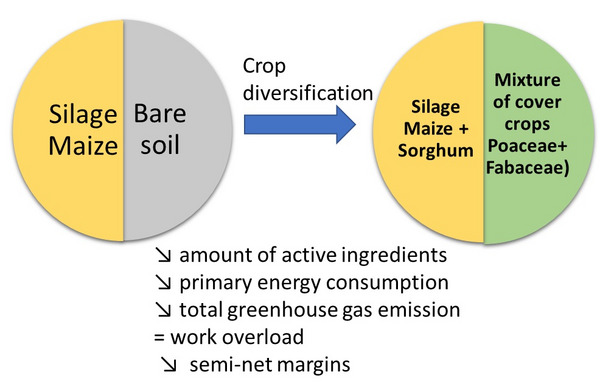The first data collected from the 10 field experiments are now available and organized in a standardized format. The first dataset consists of the measurements and the second one contains the cultivation operations done both on the diversified systems and the reference systems. It will take several years before we have conclusive results about the tested rotations. However, with the collected data, it is possible to do a first assessment which will give a preliminary overview of the potential benefits of the strategies tested. Moreover this approach could help the field experiment leaders adapt their cropping systems to better reach the expected benefits. This approach can also contribute to mutual learning on the different strategies (e.g., rotation, multiple cropping, intercropping) and the impacts of crop diversification.
A multi-criteria analysis of the performances of each experiment is performed using the software SYSTERRE® developed by ACTA. This software calculates results for performance indicators from the exhaustive inventory of all cropping system cultivation operations. The following indicators were chosen for this preliminary assessment: 1) Economic: gross margins, economic efficiency of inputs and production costs; 2) Environmental: CO2 equivalent emissions, Treatment Frequency Index (TFI) and nitrogen, phosphorus and potassium balances; 3) Social: working load.
We will test the hypothesis that innovative combinations of spatial and temporal diversification with reduced inputs can improve both economic and environmental performances of cropping systems.

 tippen und dann zum Befehl zum Home-Bildschirm hinzufügen nach unten scrollen.
tippen und dann zum Befehl zum Home-Bildschirm hinzufügen nach unten scrollen.